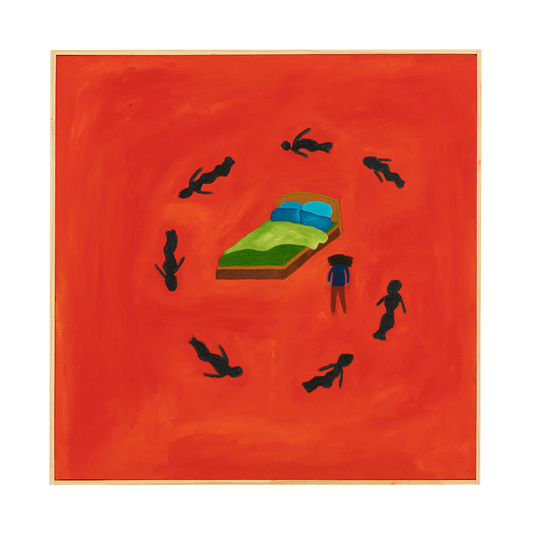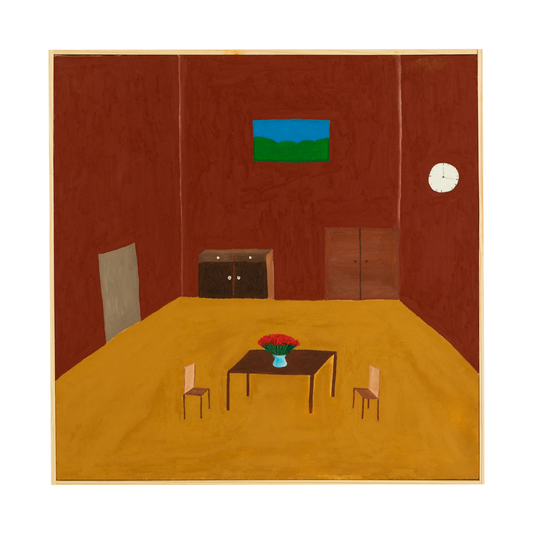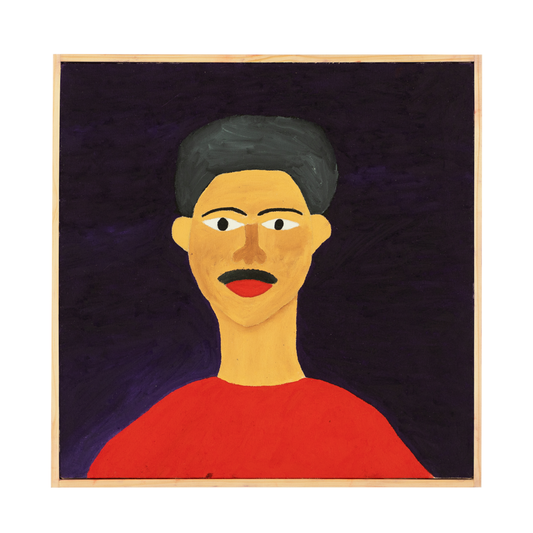This solo exhibition by Kagiso Reuben celebrates the artist’s successful completion of the Residency28 programme, featuring the works produced during his time in the studio. With this body of work, Reuben was intent on fostering a deeper relationship with his painting practice. He was also resolved to explore some of the more intricate aspects of his lived experience, the complex nature and shifting states of his mental health. The wilful embracement of these more arduous aspects, coupled with Reuben’s playful and candid means of figuration produce a contrast that affirm the artist’s unique way of seeing and being in the world.
The included works enable the narrative retelling of a lengthy psychotic episode, a period in which Reuben spent making art. In many ways, the severe character of that event shaped the texture of the works produced during the same period. It could then be said that the attributes of this no-longer-conscious past (indexed in some way in previous works) account for one aspect of the artist’s subjective experience. Another could be seen in his current work, which boasts a newfound sense of lucidity— a straightforwardness that strikes the viewer at first glance.
Reuben’s current paintings maintain the youthful essentialism for which he is known but work to a different end, as a means of reciting his previous descent into depression and subsequent ascent to emotional and perceptive stability. These changes are reflected through various representational cues: biblical references to shifting faiths convey transitional mental states, idealised scenes of open spaces carry a longing for the outside world, domestic interiors speak to the quality of home life, relationships to family, and moments of solitude.
Reflecting on the psychological issues faced by Reuben to date, recalls Jared Sexton’s meditation on George C. Wolfe’s The Coloured Museum, The ultimate refrain, then: “THERE’S MADNESS IN ME AND THAT MADNESS SETS ME FREE.” Altogether, the ensemble repeats and recites and recounts. But what is this madness within, and from whence, and what is the “me” it sets free? (Sexton, 2011:6).
Indeed, Sexton is contextualising the nature of black social life more broadly, the strained relation between blackness and being, whereas Reuben is speaking directly to his own perspective as a black artist reflecting on the social. Nonetheless, a poignant affinity is traced out in the enactment of lived experience through the practice of making art, in which multiple aspects (sides of self) need to be accounted for and reconciled.
References:
Sexton, J., 2016. The social life of social death: On Afro-pessimism and Black optimism. In Time, temporality and violence in international relations (pp. 61-75). Routledge.
Bloch, E., Plaice, N., Plaice, S. and Knight, P., 1986. The principle of hope. Cambridge, MIT Press.
 Sold out
Sold out Sold out
Sold out Sold out
Sold out Sold out
Sold out Sold out
Sold out Sold out
Sold out Sold out
Sold out Sold out
Sold out












